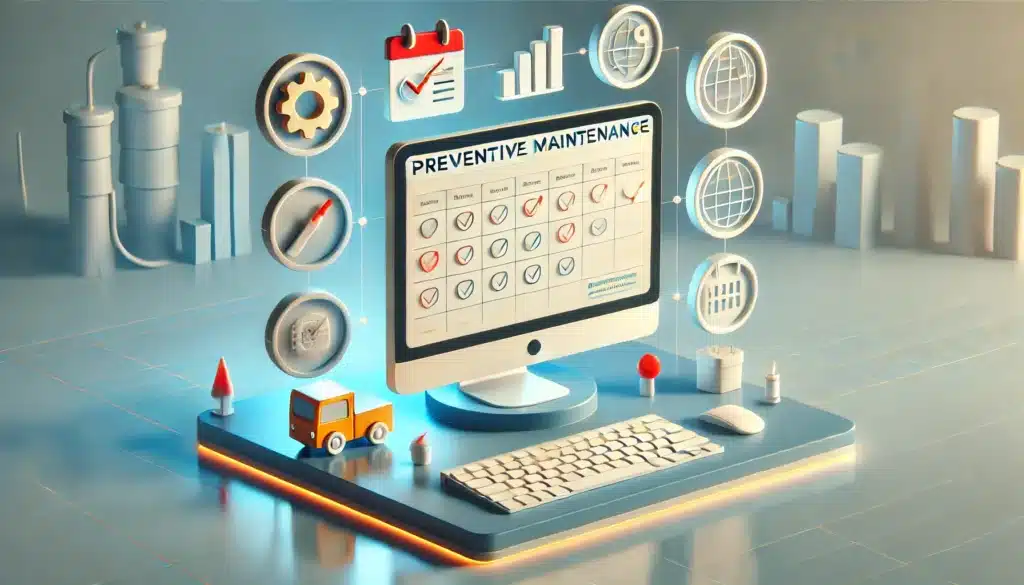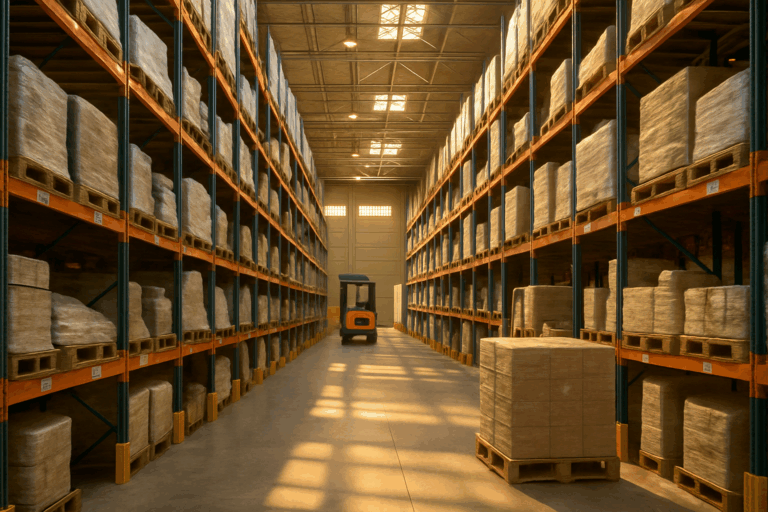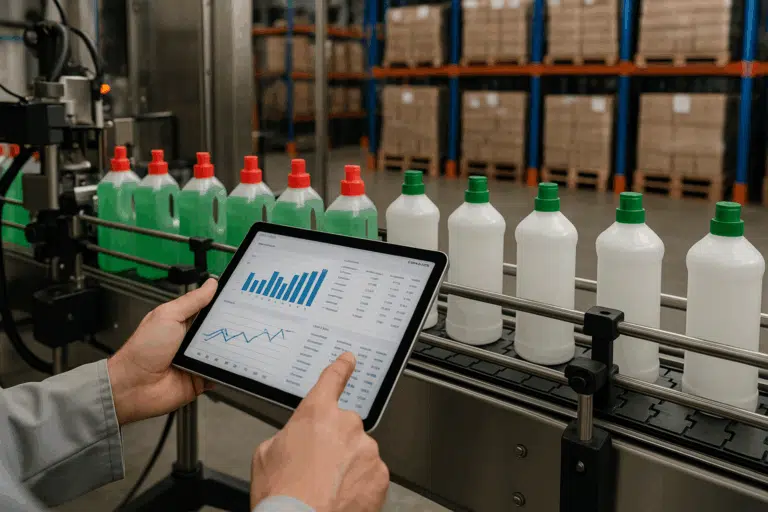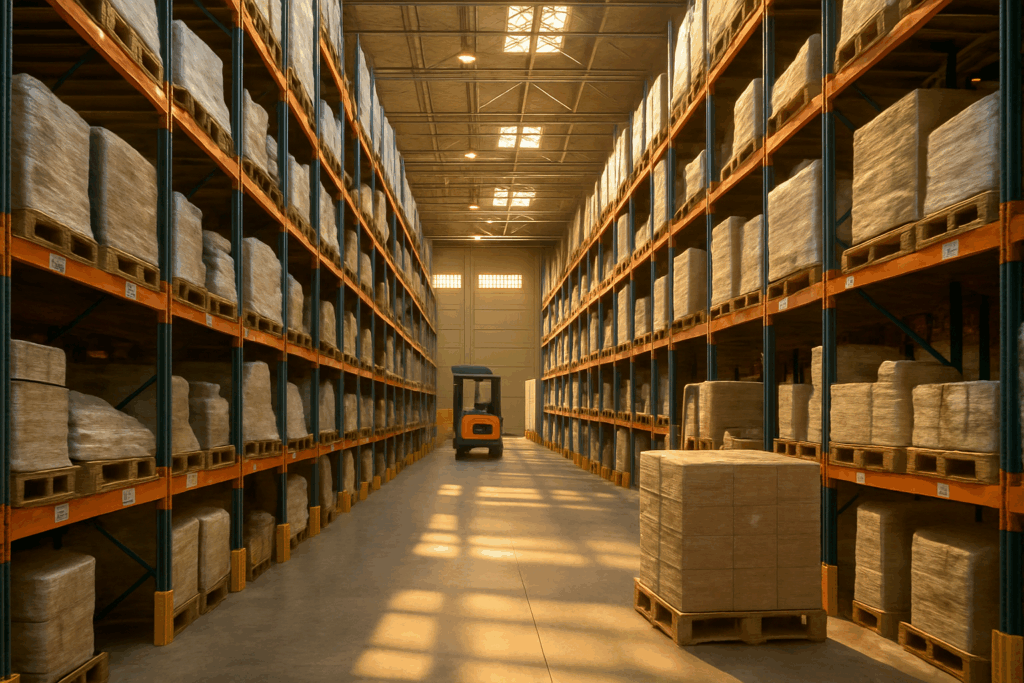Have you ever thought about how one tech change can cut costs and reduce problems in many fields? Asset management preventive maintenance software is a key player in making things run smoothly and last longer. Our software, CubeAsset, helps manage maintenance in a smart way.
Our tools make it easy for maintenance teams to do their jobs well. They help avoid small problems that can add up. Our software works for many industries and is cloud-based, helping businesses save money and keep assets running longer.
Our software includes cool tech like RFID GPS tracking stickers for better tracking and control. The CubeAsset shows how our software can really help businesses save money and improve performance.
Table of Contents
ToggleKey Takeaways
- Our asset management preventive maintenance software helps solve problems before they start.
- CubeAsset is key to our offering. It’s flexible, works for many industries, and offers useful data.
- With over 1,000 integrations through Cetaris, our software can be tailored to fit your needs.
- Our CMMS options, like Fiix and eMaint, have flexible pricing and deployment to meet your business needs.
- Using RFID GPS tracking stickers in our software improves tracking and maintenance.
- We focus on making our facility management software easy to use and powerful. This keeps everyone on the same page.
- Our asset tracking software makes things run better, extends asset life, and saves our clients money.
The Role of Preventive Maintenance in Asset Management
Knowing what is preventive maintenance in asset management? is key for any company wanting to use assets better and make them last longer. Using maintenance planning software helps move from fixing things after they break to fixing them before they do. This makes assets more reliable and helps manage inventory better.
Preventive maintenance means checking, fixing, and stopping problems before they start. It stops machines from breaking down unexpectedly and saves money on emergency repairs. With the right software, companies can plan and do maintenance that keeps things running smoothly.
| Type of Maintenance | Key Benefits | Associated Costs |
|---|---|---|
| Preventive Maintenance | Extends asset life, reduces unplanned outages, simplifies compliance | Lower overall due to reduced emergency repairs and downtimes |
| Predictive Maintenance | Targets maintenance tasks based on predictive analytics from historical data | Costs are controlled by precise maintenance thus avoiding unnecessary checks |
| Reactive Maintenance | Addresses failures as they occur | High, due to emergency breakdowns and higher downtime |
| Prescriptive Maintenance | Anticipates and advises on potential failures | Initial higher investment in technology but reduces risk significantly |
Using maintenance planning software saves money and makes equipment safer and more reliable. Following a planned maintenance schedule keeps assets working well and meets safety standards. This creates a safe place for everyone to work.
Good inventory control in preventive maintenance stops stock shortages and too much inventory. This makes operations smoother and cuts down on costs for spare parts and materials.
In summary, preventive maintenance is key to good asset management. It keeps equipment in top shape and ready to use. This approach not only protects assets but also follows rules, supports the environment, and makes businesses stronger and more reliable.
Why Efficiency in Preventive Maintenance Matters for Asset Longevity

Efficient preventive maintenance is key to making assets last longer and work better. By planning maintenance well, businesses can improve how long assets last. They also use less energy and need fewer repairs.
The Direct Impact on Asset Lifecycle
Good preventive maintenance makes assets last longer. It uses methods like Time-Based Maintenance (TBM) and Condition-Based Maintenance (CBM). These methods help spot and fix problems early.
This keeps assets in good shape and working well. It also means less unexpected downtime. This keeps productivity steady.
Cost-Saving Advantages
Preventive maintenance saves money too. It cuts down on repair and replacement costs. It also helps lower energy bills by watching energy use.
Using smart tools and data helps keep costs down. This balance between saving money and keeping things running smoothly is key.
In short, good preventive maintenance is crucial. It keeps assets running well and saves money. Many big companies use new tech like IoT sensors and predictive analytics. They want their assets to last as long as possible.
| Preventive Maintenance Strategy | Benefits | Example Applications |
|---|---|---|
| Time-Based Maintenance (TBM) | Planned, regular intervals Reduces sudden failures | Manufacturing equipment, Vehicle fleets |
| Condition-Based Maintenance (CBM) | Monitors real-time asset condition Optimizes resource usage | Building HVAC systems, Production line machinery |
| Predictive Maintenance | Forecasts potential issues Improves operational continuity | IT network components, Transport infrastructure |
Understanding Predictive vs. Preventive Maintenance
In the world of asset care, predictive maintenance and preventive maintenance are key. Each has its own use and benefits. Knowing how to use predictive maintenance tools and preventive maintenance scheduling software is key for managing assets well.
Predictive maintenance uses new tech like AI and IoT to check on assets in real-time. It predicts when things might break down. This has cut downtime by up to 50% in places like oil and gas. It also makes assets last 20-40% longer.
Preventive maintenance, started in the 1950s, involves regular checks and fixes. It aims to prevent breakdowns by doing maintenance at set times.
| Attribute | Predictive Maintenance | Preventive Maintenance |
|---|---|---|
| Technology Used | AI, IoT, Machine Learning | Standard asset monitoring tools |
| Implementation Cost | Higher due to advanced tech | Relatively lower |
| Cost Savings | 25%-30% | 12%-18% |
| Data Utilization | Real-time monitoring and analysis | Routine check-ups and logs |
| Main Advantage | Maintenance based on asset condition | Minimizes excessive downtime |
| Obstacles | Time and cost-intensive setup | May not predict sudden failures |
Predictive maintenance is great for reducing the need for repairs. It uses advanced tools to check on assets. On the other hand, preventive maintenance is simple and saves money. It helps avoid unexpected downtime.
Choosing between predictive maintenance and preventive maintenance depends on the business. Some use both to get the best of both worlds. Our preventive maintenance scheduling software helps find the right mix for each business.
In summary, the choice between predictive and preventive maintenance depends on the business’s needs. Both are important for keeping assets running well. They show the value of acting before problems happen, not just fixing them after.
Incorporating RFID and RTLS in Asset Management
Modern asset management has changed a lot with RFID and RTLS. These technologies help businesses track and manage resources better. Our asset tracking software uses them to give accurate, real-time data. This data is key for good inventory control and maintenance.
Real-Time Tracking for Enhanced Maintenance
RTLS technology, including UWB, BLE, and RFID, makes tracking assets precise and up-to-date. It lets us do proactive maintenance, cutting downtime and making equipment last longer. RTLS can pinpoint locations to less than a meter, helping us manage assets well.
Improving Inventory Control with RFID Technology
RFID is key for better inventory control. It makes tracking inventory faster and more accurate, up to 95%. This makes operations smoother and saves money on manual management. RFID has also improved inventory accuracy in many areas, like fashion brands.
RFID and RTLS help with more than just inventory. They also track staff safety, manage visitors, and improve supply chains. These systems are easy to grow and fit with what we already have, like Wi-Fi. This makes them affordable and quick to set up.
Let’s look at the good points of using RFID and RTLS in our asset tracking software:
| Technology | Key Benefits | Common Applications |
|---|---|---|
| RFID | Faster inventory processing, high inventory accuracy, reduced labor costs | Supply chain management, inventory control, access control |
| BLE-based RTLS | Cost-effective, easy deployment, high scalability with existing Wi-Fi | Asset tracking, staff safety, visitor flow management |
In conclusion, using RFID and RTLS in asset management boosts real-time tracking and changes inventory control. This makes operations more efficient than ever.
Asset management preventive maintenance software: A Game Changer

Seeing asset management preventive maintenance software as a game-changer is true. It changes how groups do maintenance. It brings in equipment tracking, maintenance scheduling software, and facility maintenance management. This makes teams work better and faster.
This way, they can fix things before they break. It also makes things work better and longer. This is a big win for keeping things running smoothly.
Our solutions, like Cube’s cloud-based system, change maintenance for the better. Using these systems cuts downtime and repair costs. It also makes teams work better together.
It makes everything run smoother. This leads to a better work place for everyone.
- Real-time equipment tracking helps teams work together better.
- Automated work orders keep things running smoothly. This makes things more efficient.
- Integrated inventory management keeps things in check. This saves money and reduces waste.
Our maintenance scheduling software makes maintenance better. It helps keep assets running well for longer. This is great for many industries, like construction and IT.
These industries see big improvements after using our software. It helps them manage assets better.
Our software has cool features like an integrated calendar. It supports all file types and tracks equipment well. This makes maintenance easier and safer.
Over 500 companies, schools, and cities trust us. Our software is easy to use and meets strict rules like GDPR. It helps make smart choices and use resources well.
Our facility maintenance management system changes maintenance for the better. It makes things safer, more efficient, and cheaper. It’s key for managing assets well in any field.
CMMS: Streamlining Maintenance Scheduling and Execution
Using a computerized maintenance management system (CMMS) has changed many organizations. It makes maintenance work better. Studies show 85% of companies say a good CMMS, like Asset Cube, makes their maintenance work much better.
For companies wanting better work order management and smoother operations, a CMMS is key. It brings real results:
- Efficiency and Agility: 45% of companies say they work faster and better.
- Reduced Downtime: 62% have less equipment downtime, showing the system’s power to keep things running.
- Prioritization of Work Orders: 75% can now plan maintenance better, thanks to the CMMS.
- Improved Asset and Equipment Management: 80% manage their assets better, making them last longer and saving money.
- Reduction in Emergent Repairs: 51% fix problems before they happen, thanks to the CMMS.
Cloud-based CMMS solutions have also changed how maintenance is done. They make starting up easier and grow with your business. This means any size business can use the system without a huge upfront cost.
Also, having all maintenance data in one place makes things easier. It automates tasks and gives real-time insights. This helps make smart decisions that improve maintenance and asset management.
With our CMMS, maintenance tasks are now a big plus for your business. It makes scheduling, doing, and tracking work orders easy. It also makes sure you follow rules and work more efficiently. A CMMS is not just for keeping things running. It’s for making your business the best it can be.
Maintenance Planning Software for Proactive Asset Care
In the world of asset management, proactive asset maintenance is key. It’s not just a trend, but a must for keeping things running smoothly. Our maintenance planning software helps you care for your assets in a smart way. It fits the needs of many different industries.
Our software is all about making maintenance scheduling better. It automates and optimizes work orders. This helps cut down on downtime and makes your assets last longer.
It also uses real-time data to give you insights into what maintenance you need. This way, you can fix problems before they get big. This keeps your services running without a hitch.
| Feature | Benefits |
|---|---|
| Automated Work Orders | Ensures timely maintenance, improves accuracy and efficiency of repairs. |
| Real-time Data Analytics | Enables proactive maintenance decisions, minimizes downtime. |
| Flexible Scheduling | Allows customization based on asset criticality and usage patterns. |
| IoT Integration | Facilitates immediate issue detection and response through connected devices. |
| Subscription-Based Pricing | Offers scalable solutions according to facility needs and operational budget. |
Switching to proactive asset maintenance is a big win. It protects your assets and meets rules without costing too much. Our maintenance planning software lets you see problems coming and fix them before they happen.
Jeffrey Luna, Director of Real Estate for ALDI, saw big improvements. “Using this software changed how we do things. We cut down on unplanned downtime and saved money,” Luna said.
Using top-notch maintenance planning software makes your assets work better. It also makes your operations safer and more reliable. It’s a smart choice for a future-proof business.
Pivotal Factors: Maintenance Scheduling Software and Strategic Planning
In the world of asset management, using maintenance scheduling software is key. It makes resource allocation and asset investments better. This leads to big improvements in many areas.
Our method of using this software is focused on important features. These features help businesses work better and more efficiently. The software makes sure resources are used right, cutting down on waste and keeping assets running.
- Effective asset investments planning by generating detailed asset performance reports.
- Enhanced resource allocation that aligns with both immediate needs and long-term strategic goals.
- Comprehensive maintenance insights that support strategic planning decisions.
Our tools also come with strong analytics. This lets businesses turn data into useful plans. These plans help decide where to put resources and how to make the most of investments.
“Strategic planning and maintenance scheduling are intertwined elements that, when effectively managed, can significantly boost operational efficiency and asset longevity.”
It’s important to see how these two work together. Maintenance scheduling keeps things running smoothly. Strategic planning helps grow and get bigger. This combo stops problems and encourages looking ahead.
By choosing good maintenance scheduling software, companies can improve a lot. They’ll manage resources better, have less downtime, and meet their goals. This is crucial for staying strong and lasting in today’s tough market.
Key Features of Leading Facility Management Software Solutions
At the heart of top facility management software is a focus on making maintenance better. It’s not just about fixing things when they break. It’s about planning ahead and following rules closely. This makes everything run smoothly.
Work Order Management Efficiency
Our software makes managing work orders easier. It automates scheduling and tracking. This helps avoid big problems and keeps things running on time.
Users love how it makes planning and fixing things faster. It helps them do their jobs better. They get real-time updates and can fix things quickly.
Maintaining Compliance with Facility Maintenance Management Tools
Keeping up with rules is key for any facility. Our software has tools to help with this. It keeps important documents safe and makes checking up on rules easy.
These tools help keep places safe and running right. They make sure everyone is protected. This means a safer and more reliable place for everyone.
In short, our software makes maintenance better and keeps things in line. It saves money and makes things last longer. It’s a big help in today’s fast world.
Optimizing Workflows with Equipment Maintenance Software
The world of industrial maintenance is changing fast. Equipment maintenance software is at the heart of this change. It helps businesses do more than just keep equipment running. It makes sure all maintenance tasks, from MRO inventory management to audit preparedness, are smooth and efficient.
Deloitte says bad maintenance can cut a facility’s productivity by up to 20%. But, using strong software like CMMS can prevent this. CMMS helps predict problems and keeps everything running well. For more on how CMMS can improve maintenance, check out our in-depth guide.
Using equipment maintenance software brings big benefits. It cuts downtime a lot. Predictive analytics spot problems before they happen, making maintenance better and longer-lasting. It also helps keep inventory full, making MRO work more efficient and reducing waste.
| Feature | Benefit |
|---|---|
| Predictive Maintenance | Reduces emergencies and unplanned downtime |
| Real-time Asset Tracking | Enhances operational awareness and responsiveness |
| Streamlined Work Orders | Ensures timely maintenance and reduces backlog |
| Compliance Documentation | Facilitates audit preparedness by compiling necessary reports and data |
| Resource Optimization | Maximizes both human and material resources |
Good MRO inventory management through CMMS is key. It tracks equipment wear and prevents breakdowns. It also optimizes spare parts stock, saving money and keeping operations ready.
In short, using advanced equipment maintenance software is crucial. It supports maintenance scheduling and inventory management. It also keeps a company ready for audits and checks. This approach protects assets, boosts business resilience, and promotes sustainability.
Extending Equipment Lifecycle with Predictive Maintenance Tools
In today’s competitive world, every percent of efficiency is a big win. Predictive maintenance tools are now a must, not just a nice-to-have. They help companies run better and make their equipment last longer.
As we all want to save money and be green, our predictive maintenance plans are key. We use smart analytics and watch data in real-time. This helps us avoid breakdowns, plan maintenance better, and save on unexpected costs.
We see a direct correlation between predictive maintenance and reduced operational costs, translating into a healthier bottom line for businesses across various sectors.
Using predictive maintenance really pays off. It can make production lines run 5 to 15% better and cut maintenance costs by 18 to 25%. It’s especially good for manufacturing, helping them avoid downtime and keep machines running longer.
| Key Metrics | Improvement |
|---|---|
| Production Line Availability | 5 to 15% Increase |
| Maintenance Costs | 18 to 25% Decrease |
| Unplanned Work | Significant Reduction |
| Overall Equipment Effectiveness | Notable Improvement |
With tools like COGZ, companies get a deep look at their equipment’s health. COGZ tracks work orders, plans maintenance, and shows costs. This keeps things running smoothly and saves money on sudden repairs.
By using smart maintenance plans and tools, we help our clients stay ahead. They can plan for maintenance, not just react to it. This gives them an edge and helps them stay strong for the long run.
Maximizing ROI with Comprehensive Asset Performance Monitoring
To really boost ROI, it’s key to use asset performance monitoring fully. By adding analytics and performance analysis, companies can change how they manage assets. This makes them more efficient and effective, leading to better financial results.

We’ve found important areas for improvement to increase returns. Tracking detailed metrics helps us understand how assets are used and their condition. This helps make decisions that meet business goals.
Tracking Metrics for Tangible Business Impact
Tracking metrics like asset uptime and maintenance costs shows how operations improve. For instance, using IoT gives us real-time data. This helps keep assets in good shape, cuts downtime, and makes them last longer.
Analytics to Drive Informed Asset Maintenance Decisions
Using analytics makes our maintenance plans better. With performance analysis, we can predict when maintenance is needed. This ensures our assets work well without wasting money or using too much.
| Feature | Impact on ROI |
|---|---|
| Preventive Maintenance Scheduling | Reduces repair costs by up to 25% |
| Real-time Performance Monitoring | Increases uptime by 20%, enhancing productivity |
| Data Visualization Tools | Improves decision-making speed and accuracy |
| IoT Integration | Optimizes asset health and extends lifespan by 30% |
Working with top IoT partners like Bell, we make sure your asset management is top-notch for ROI. Our methods offer real-time insights and proactive maintenance. They use the latest tech to save money and grow your business.
Asset Tracking Software Benefits in Preventive Maintenance
Asset tracking software is key in modern maintenance. It helps keep assets running well and long. It brings many benefits to how things work.
It makes work order generation smooth and performance analysis better. This leads to big improvements in many areas.
At the heart of it, tracking work orders helps fix things fast. This means less chance of things breaking down. It also makes equipment last longer, saving money and boosting work.
| Feature | Benefits |
|---|---|
| Automated Work Order Generation | Reduces administrative workload, allowing focus on critical tasks |
| Enhanced Inventory Management | Improves customer service by providing accurate, real-time data |
| Regulatory Compliance | Simplifies adherence to industry standards and practices |
| Strategic Decision Making | Supports knowledgeable decisions with detailed asset analytics |
| Reduction in Operational Costs | Average 25% cost reduction in maintenance via efficient tracking |
| Maintenance Optimization | Enhances equipment lifespan by scheduling timely repairs and upkeep |
Asset tracking software works with all parts of managing assets. It makes things run better and helps make smart choices. It helps predict needs and grow without spending too much.
Using the right tech is key to top asset management. It leads to better care and growth. Businesses see big changes in how they manage and keep their assets.
We help companies improve asset management with the latest tech. It cuts downtime, keeps production going, and gives a big edge over rivals.
Conclusion
Asset management preventive maintenance software is key for today’s maintenance plans. It’s not just a tool, but a must-have for big facilities teams. Our apps offer important features like job planning and Enterprise Asset Management (EAM) and Computerized Maintenance Management System (CMMS).
They help keep assets running longer and meet company goals. Our software helps cut down on unplanned downtime and saves on labor costs. This supports continuous improvement in how businesses work.
Our platform, eWorkOrders, helps many fields like manufacturing and education. It reduces downtime, saves money, and follows rules. It also cuts down on mistakes and makes maintenance smoother.
We’re dedicated to helping businesses with our asset management solution. It lowers maintenance costs and makes preventive maintenance precise. This leads to better Health and Safety, clear reports, and more efficient maintenance.
By choosing our software, your company starts making better decisions. It moves towards more efficient maintenance and a strong, profitable future.
FAQ
What benefits does asset management preventive maintenance software provide?
This software makes things run smoother and faster. It cuts down on downtime and helps plan maintenance ahead of time. It also tracks assets well and makes them last longer. Plus, it helps follow rules and predict maintenance needs.
How does preventive maintenance enhance facility management?
It keeps facilities in good shape by doing regular checks. This stops unexpected problems and keeps everyone safe. It also saves money by avoiding costly repairs or replacing things too soon.
Can asset tracking software improve maintenance processes?
Yes, it makes maintenance better by tracking equipment in real time. It makes it easy to create work orders and schedule maintenance. This leads to better use of resources and fewer surprises with equipment failures.
What is the difference between predictive and preventive maintenance?
Predictive maintenance uses tools to guess when something might break. Preventive maintenance does regular checks before problems start.
What role does a CMMS play in asset management?
A CMMS helps organize and plan maintenance. It makes work orders easier and keeps track of everything in one place. This helps maintenance run smoothly and effectively.
How does RFID technology contribute to asset management?
RFID makes tracking equipment fast and accurate. It helps keep an eye on what’s being used and when. This makes it easier to manage and maintain assets.
What is the impact of maintenance planning software on asset management?
This software makes maintenance better by planning it out. It helps keep assets running well, cuts downtime, and makes them last longer.
Why is maintenance scheduling important for strategic planning?
Scheduling maintenance is key for planning. It makes sure resources are used right and maintenance is done at the best time. This helps keep assets running well and supports overall goals.
What key features should facility management software include?
Good software should help complete work orders, manage routes, and support audits. It should also focus on the most important maintenance tasks to manage well.
How do predictive maintenance tools extend equipment lifecycle?
These tools watch how equipment is doing and predict when it needs maintenance. This stops failures and cuts down on unplanned downtime.
How can asset performance monitoring maximize ROI?
Monitoring asset performance gives detailed insights. This helps make smart decisions about maintenance and finds ways to save money and improve operations.
What is the relationship between asset lifecycle management and maintenance?
Managing an asset’s lifecycle is closely tied to maintenance. Keeping assets in good shape and fixing them on time makes them last longer. This ensures they work well and give the best value over their life.



























